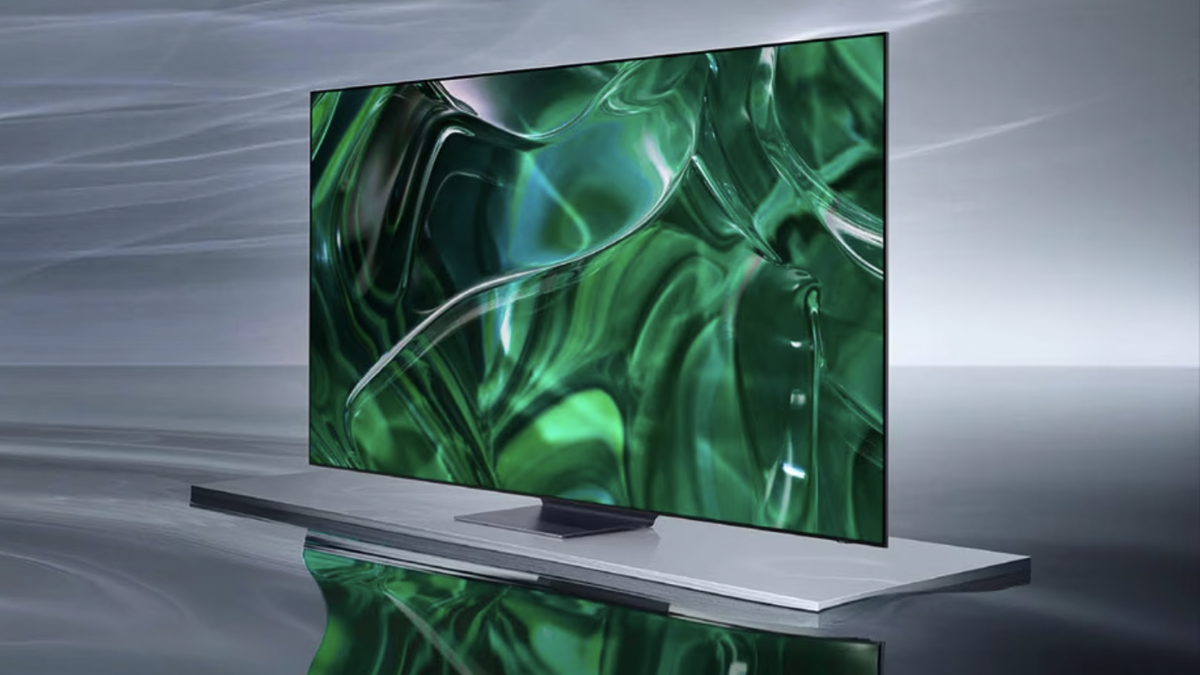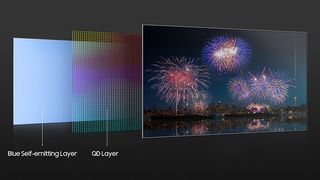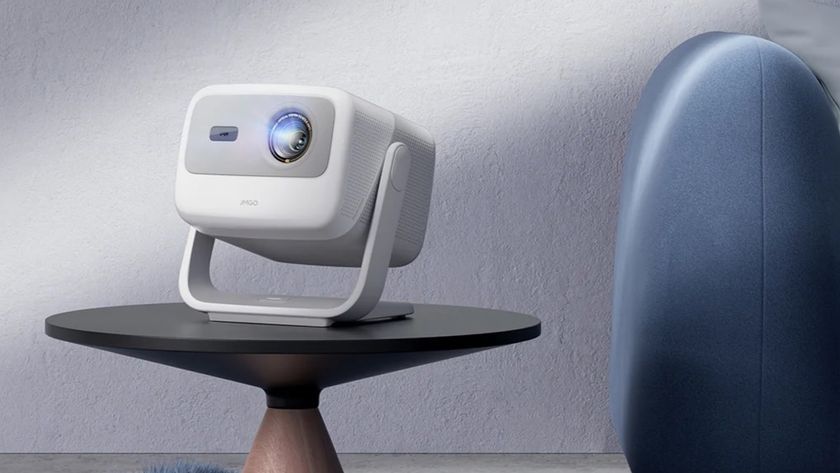Cheaper QD-OLED TVs could be on the cards at last as Samsung eyes new tech
LG & Samsung reportedly want better blue pixels, but Samsung would be the big winner

Samsung and LG are reportedly considering a switch to a new way of making blue OLED pixels with vastly improved efficiency - and it could be the key to bringing the price of QD-OLED TVs down.
QD-OLED TVs deliver phenomenal image quality and brightness, as noted in our Samsung S95C review, but currently cost a huge amount; the S95C is priced about 30% higher than the LG C3, which uses a standard OLED panel. But this blue light tech could change that, because of the way QD-OLED screens are made.
Blue OLED pixels are only about 25% efficient at sending their light towards your eyes, while red and green OLED pixels are closer to 100%. And QD-OLED TVs consist almost entirely of blue OLED pixels, which are converted to other colors using the same kind of Quantum Dot tech you get in QLED TVs.
The new tech, developed by Universal Display (UDC), will be especially beneficial to Samsung. At the moment, Samsung Display (which is the only maker of QD-OLED panels) uses multiple layers of blue OLED pixels to get the brightness it needs – along with some green pixels.
But UDC's new technology promises blue pixels that are also around 100% efficient, meaning Samsung Display could use fewer layers of pixels in QD-OLED screens to achieve the same levels of brightness. And that in turn means the screens would be simpler to build, and require less material, bringing down costs.

The development would also be beneficial to LG Display's OLED TVs too, of course – but its version of OLED uses blue, green, red and white pixels all together, so it probably won't have the same kind of impact as it would with Samsung's QD-OLED screens.
The report comes from ETNews (via FlatPanelsHD), and it's interesting because while we've reported on the developments in more efficient blue pixels before – from Samsung Display itself, and on this same tech from UDC – this is the first time we've heard about LG Display and Samsung Display actively evaluating it as an option.
Get daily insight, inspiration and deals in your inbox
Sign up for breaking news, reviews, opinion, top tech deals, and more.
That suggests the technology is closer than ever to becoming a practical reality, though don't expect anything to arrive right away.
Don't hold your breath til you're blue
For a start, it sounds like the companies could decide the new blue pixel tech isn't ready for prime time. They're only reviewing it right now – they'll have to decide if they're happy with the results, if they think it can be made easily and efficiently enough, and whether it's worth the price UDC is asking for it.
Even if they want to start using the tech, the companies will need to design new screens based on it, and then change their manufacturing facilities to incorporate it. And then those new screens need to be shown to the parts of LG and Samsung that actually make finished TVs, and designed into products.
I would say the best possible scenario for this is that we see these TVs in 2025, with 2026 being more likely even if things go smoothly.
But I've been surprised before by the progress of the tech in the best OLED TVs in recent years. I didn't expect the Samsung S95C to be able to hit 40% higher brightness levels than last year's model, and I didn't expect the LG G3 OLED to be able to match the S95C for brightness - something it achieves thanks to Micro Lens Array tech.
So, here's hoping for a pleasant surprise. I just wouldn't let this news put you off upgrading to one of the best TVs today if you're in the market.

Matt is TechRadar's Managing Editor for Entertainment, meaning he's in charge of persuading our team of writers and reviewers to watch the latest TV shows and movies on gorgeous TVs and listen to fantastic speakers and headphones. It's a tough task, as you can imagine. Matt has over a decade of experience in tech publishing, and previously ran the TV & audio coverage for our colleagues at T3.com, and before that he edited T3 magazine. During his career, he's also contributed to places as varied as Creative Bloq, PC Gamer, PetsRadar, MacLife, and Edge. TV and movie nerdism is his speciality, and he goes to the cinema three times a week. He's always happy to explain the virtues of Dolby Vision over a drink, but he might need to use props, like he's explaining the offside rule.











